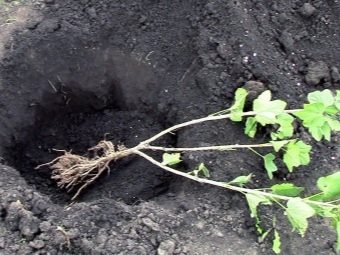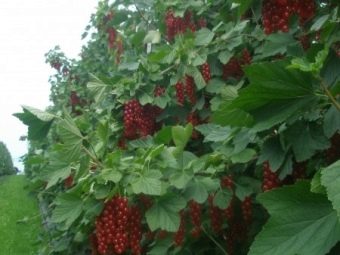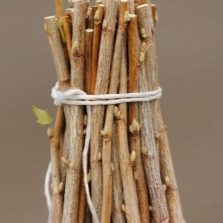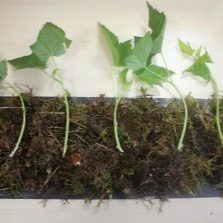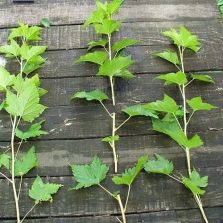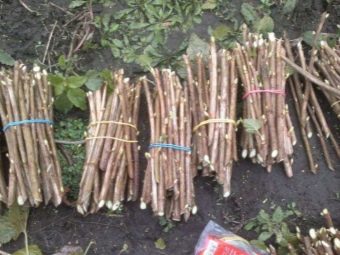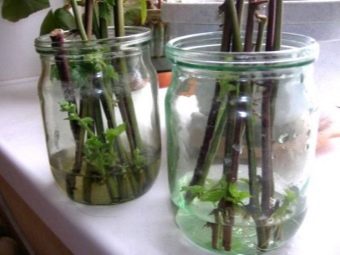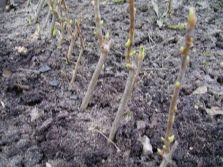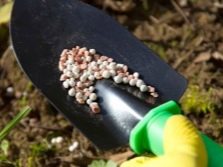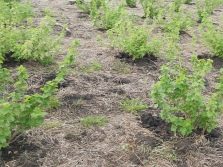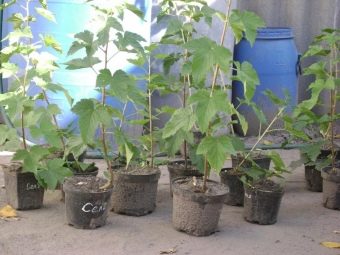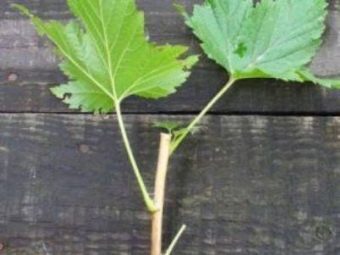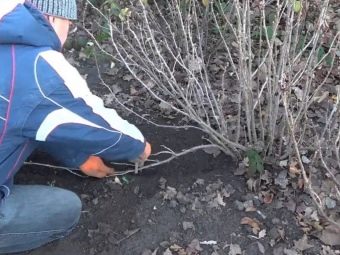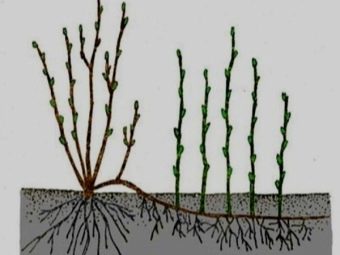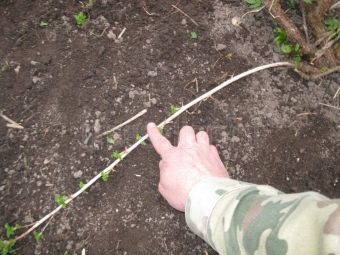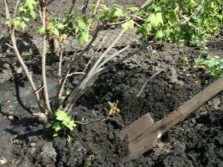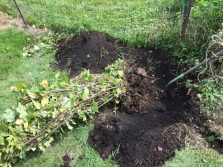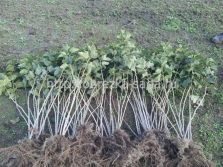How to propagate red currants?
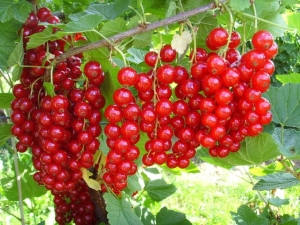
Red currant is a very unpretentious crop.Shrubs with this berry are grown on almost every summer cottage and in any orchard, and do not cause much trouble. Currant under favorable conditions always pleases with abundant crops. The fruits are suitable for a variety of canned blanks, not to mention the benefit and pleasure they bring when used fresh in summer. Therefore, quite often before the cottagers or gardeners, the question arises how to successfully propagate this fruit shrub.
Features of culture
For cultivation in the middle lane and in the southern regions suitable for about 20 varieties of red currants. However, many gardeners prefer to propagate the bushes of this plant on their own. In most cases, this is a fully justified decision. First, it is not difficult to master this process. Transplantation and cultivation of this culture is quite feasible even for a beginner. Secondly, if a variety growing on a plot has all the desired properties and gives a good harvest, all the more there is no particular need to acquire a new and unknown one.
Currant belongs to the perennial shrubs. The shrub of an adult plant usually reaches a height of 1-2 meters.
On average, the maximum period of fruiting of one plant is 8-10 years. Under very favorable conditions, there have been cases when one plant has been bearing fruit for almost 20 years.
This culture has well developed processes of rooting. Parent material is usually easy to take root when planted and quickly develops into a new adult shrub.
Dilute red currant on your site in several ways:
- cuttings;
- layering;
- division of the bush.
Red currant prefers lit areas. In terms of soil, sandy and loamy soils are optimal for it. It is desirable that the distance from other plants and currant bushes be at least one and a half meters. Then an adult shrub will be able to spread its branches without encountering obstacles and not interfering with other plants.
It is also worth remembering that although the culture is quite drought-resistant, good watering will still greatly improve its fruiting.
About the moisture-loving nature of this fruit shrub it is also indicated by the sign that often wild varieties grow along the banks of rivers and other water bodies.
Further in the article will be given a detailed description of each of the above methods of breeding this culture.
Cuttings
Perhaps one of the most simple and easily doable breeding techniques for fruit shrubs. Having mastered the rules of this procedure, each gardener or summer resident will be able to easily cut and grow the number of berry bushes he needs.
- Preparation of material for the subsequent disembarkation is carried out in the early autumn. At this time, the process of movement of juices in the plant is already significantly slowed down. The branches are taken from a fruiting, healthy shrub. It is optimal if the shoots for breeding are quite strong, 6-8 mm thick. Cutting of planting material is carried out using a secateur.
- From the cut escape should remove the leaves. Next, the branch is divided into small pieces about 20 cm long. On each of the cuttings thus obtained, 5-6 buds should be left. Moreover, the cut above the upper kidney must be made straight, without tilting. But the lower cut is made at an angle.
- Prepared cuttings are placed in a small vessel with water. There they should be held until the first signs of rooting at the lower ends appear.
- Next, the cuttings are planted in the ground. Landing should be well dig, remove weeds and their roots. Soil preparation consists of fertilizing. For cultivation of culture it is good to fertilize the soil with peat, humus, compost or to apply potassium fertilizers, ammonium nitrate. It is also desirable to make the soil more alkaline, scattering lime, chalk or wood ash on the planting area.
- After applying fertilizers and nutrients, repeated surface digging is carried out (on a spade bayonet) and irrigated.
- If you plan to plant several cuttings, it is better to prepare a shallow, 10-15 cm, trench. It should mark the place for the location of the prepared shoots at a distance of 20-30 cm from each other.
- Cuttings deepened at an angle. 2-3 upper buds should remain on the surface. The soil is slightly compacted. After produced abundant watering.
- So that the moisture from the top layers of the soil does not evaporate quickly, mulching with humus or sawdust is performed. This is important for the development of the root system of the planted stem. Since at first the sprout will not be able to take moisture from the deep soil.
- In this state, the planted maternal material spends the entire winter. In the spring, those cuttings that show signs of development are transplanted to a permanent place.
It so happens that in the fall severe cold comes early. Under such adverse conditions, planting cuttings under the winter into the ground is impractical. Chances are that they will not be able to develop roots in a cold, beginning to freeze through the soil.
In this case, harvested twigs can be planted at home in small pots or other suitable containers. During the winter-spring period, the processes will give roots and grow stronger. With the onset of well-established warm weather they can be transplanted to the site.
There is also another way of breeding red currants with cuttings. It is called "green cutting". Its difference lies in the fact that the reproduction of culture occurs not lignified branches, and still very young shoots. Implemented this method of seating currant as follows.
- In early June, on the bush you need to choose the young shoots of the growth of the current season. They cut off the tip of a length of about 10 cm.
- From the cut off branch, all the leaves are removed, except for the two uppermost ones. For best results, cuttings can be processed with growth or root-forming composition. However, the experience of many summer residents shows that, in most cases, the cut-off young material already takes root well.
- The cuttings are stuck into the prepared soil at an inclination at a distance of 20-30 cm from each other. Abundant watering is carried out.
- The soil is mulched. Further care during the summer season consists of regular watering, loosening of the soil, removal of weeds.
- In September, the cuttings are usually well rooted and grow up to 20-30 cm. At this time they can be seated in a permanent place.
Breeding layering
It is possible to grow a currant bush by another method, namely, by withdrawing and rooting healthy shrub branches.
First option.
- In the fall, a strong currant sprout should be bent to the ground and sprinkled with a small layer of soil. At the same time, the top with leaves remains on the surface, only the middle part of the appendix is dropped.
- It is important to take care that the branch does not break, but also does not free itself from the soil, returning to its previous position. You can additionally “pin” the shoot with metal clips or other suitable materials for this purpose.
- In such a state, the layers winters and spends half the next summer season. In late July - early August, a rather strong root system is usually formed at the allotted branch.
- The ingrained otvodok is separated from the parent plant and transplanted.
The second option.
- In early spring, before bud break, an annual runaway that does not have branches, bends down to the soil. It is desirable to loosen the soil under the bush in advance and make a small groove for the layering.
- The branch is fixed in a tilted position and powdered with soil. During the season, layering should be regularly watered and spud. With irrigation, you can make nutritional compounds to accelerate rooting.
- In the fall, after removal of the crop from the mother bush, the layers are separated and planted in a permanent place.
Bush separation
Red currant bush can be propagated by dividing the adult shrub.This method is also convenient to use if you want to move the culture to another location of the site for any reason.
In this case, with one plant you can get several seedlings for transplantation.
First you need to prepare a place for planting separated branches with roots. Soil digging, fertilizer application and abundant soil moisture are made at the landing site.
- The bush, from which the roots and branches will be separated, is dug out in the fall. It should still be green leaves. It is necessary to carefully dig up the roots of a shrub, trying to do as little damage as possible.
- All the old branches are removed from the excavated plant. For transplanting, only one-year lignified shoots should be left. Using a pruning shears, shorten them to about 30 cm.
- Further, the bush is divided into several parts. It is important that each of them have strong, sufficiently developed roots.
- Plants are planted in a new place. Before winter, they need to be watered and spud.
- The next season, the planted bushes will already take root well. In a year, being already mature plants, they will be able to produce a harvest.
How to propagate the red currant cuttings, see the next video.

